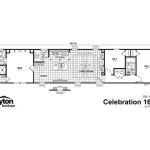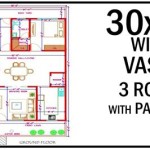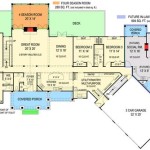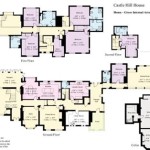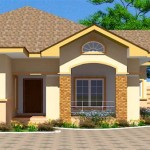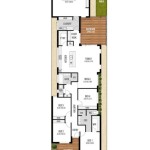Low Budget Home Plans In Kerala
Kerala, known for its lush landscapes and unique architectural style, also presents a distinct challenge for homeowners: building within a budget. The rising costs of materials and labor make cost-effective home design and construction a necessity. This article explores strategies and considerations for creating low-budget home plans in Kerala, focusing on optimizing space, selecting affordable materials, and embracing minimalist design principles.
The concept of a "low budget" is subjective and varies based on individual financial situations. However, in the context of Kerala, it generally refers to constructing a home using cost-effective methods and materials without compromising the structural integrity and functionality of the dwelling. Successful low budget home construction necessitates careful planning, meticulous execution, and a willingness to explore alternative design solutions.
Understanding the Key Factors Influencing Cost
Several key factors contribute significantly to the overall cost of home construction in Kerala. Understanding these allows for informed decisions that minimize expenses without sacrificing quality.
Firstly, the *size and complexity of the design* directly impact the budget. Larger homes require more materials and labor, naturally increasing costs. Intricate designs with elaborate features also contribute to higher expenses. Simpler, more compact designs are inherently more economical.
Secondly, *material selection* is a critical determinant of cost. Traditional building materials, such as laterite stone, can be locally sourced and are often more affordable than modern alternatives. However, the selection process requires careful consideration of durability, maintenance requirements, and aesthetic preferences. Exploring alternatives like cost-effective bricks, cement blocks, and sustainably sourced timber is crucial for budget optimization.
Thirdly, *labor costs* comprise a significant portion of the overall budget. Engaging skilled and experienced laborers is essential for quality construction, but it is also important to obtain competitive quotes from multiple contractors to ensure fair pricing. Direct engagement with laborers under the supervision of an experienced engineer or architect can sometimes lead to cost savings, but requires significant personal involvement and management skills.
Fourthly, *foundation type* impacts cost. The soil conditions of Kerala require careful foundation considerations. Depending on soil stability, options range from simple shallow foundations to more costly deep foundations. Soil testing before construction is critical to determine the most appropriate and cost-effective foundation solution. Investing in appropriate foundation work prevents expensive issues later on.
Finally, *finishing and fixtures* are areas where significant cost savings can be achieved. Opting for simpler tile designs, locally sourced sanitary ware, and minimal decorative elements can dramatically reduce the overall budget. Focus should be placed on functionality and durability over elaborate aesthetics when aiming for a low-budget construction.
Strategies for Low Budget Home Plans
Adopting specific strategies during the planning and design phases is crucial for achieving a low-budget home in Kerala. These strategies address various aspects of the construction process, from space optimization to material selection.
One key strategy is to *optimize spatial planning*. This involves designing a home that maximizes usable space while minimizing the overall footprint. Open floor plans, combined living and dining areas, and efficient use of vertical space can contribute to a more spacious feel without increasing the square footage. Minimizing unnecessary corridors and circulation areas also contributes to efficient space utilization.
Another important strategy is to *prioritize functionality over extravagance*. Focusing on essential features and avoiding unnecessary embellishments can significantly reduce costs. Instead of elaborate architectural details, emphasis can be placed on creating a comfortable and functional living space using simple and clean designs.
Embracing *minimalist design principles* is also highly effective. Minimalist architecture emphasizes simplicity, functionality, and the use of natural light and ventilation. This approach not only reduces construction costs but also creates a serene and uncluttered living environment. Minimizing the number of walls, utilizing large windows for natural light, and incorporating cross-ventilation strategies are key elements of minimalist design.
*Utilizing locally sourced materials* is another cost-saving measure. Kerala boasts a rich supply of natural building materials, such as laterite stone, bamboo, and wood. Using these materials not only reduces transportation costs but also supports local industries. Careful research and selection can identify affordable and durable locally sourced options.
In addition to material choices, *consider pre-fabricated elements*. Pre-fabricated components for walls or roofing can reduce on-site construction time and labor costs. Researching available pre-fabricated options and their suitability for the design is essential. The use of pre-engineered components require careful planning during the design phase.
Also, *phased construction* can be employed to manage budgetary constraints. Building the home in stages allows for spreading out the expenses over a longer period. It is essential to prioritize the core structure and essential utilities in the initial phase and then gradually add features and finishes as funds become available. Sound planning is critical to avoid expensive alterations in future construction phases.
Consideration of *climatic factors* during the design phase is essential. Kerala's climate is characterized by high humidity and heavy rainfall. Designing the home to maximize natural ventilation and minimize heat gain can reduce the need for air conditioning and lower energy consumption. Proper roof overhangs, strategically placed windows, and well-insulated walls are crucial for creating a comfortable indoor environment.
Material Selection for Cost-Effectiveness
The choice of building materials significantly impacts the overall cost of a home in Kerala. Exploring affordable yet durable options is essential for achieving a low-budget construction.
*Laterite stone* is a traditional and readily available building material in Kerala. It is relatively inexpensive and provides good insulation properties. However, laterite stone requires plastering to protect it from weathering. Sourcing laterite stone locally can further reduce costs.
*Cement blocks* offer a cost-effective alternative to laterite stone. They are lightweight, easy to handle, and provide good structural strength. Cement blocks also require plastering for enhanced durability and aesthetics. Their modular nature can also speed up the construction process.
*Bricks* are another common building material in Kerala. They are durable, fire-resistant, and relatively affordable. Clay bricks are widely available, but concrete bricks offer a stronger and more cost-effective alternative. The type of brick selected should be based on structural requirements and budget considerations.
*Concrete roofing* is a durable and cost-effective option for Kerala's climate. It provides good insulation and protection from heavy rainfall. However, concrete roofs can be heavy and require proper structural support. Alternatives exist like GI sheets offering lighter weight options, though may require more insulation for temperature control.
For flooring, *ceramic tiles* are a cost-effective and durable option. They are available in a wide range of designs and colors to suit various aesthetic preferences. Vitrified tiles offer greater durability and stain resistance but are generally more expensive. Polished concrete is another rising trend that can be a more cost-effective alternative.
*Locally sourced timber* can be used for doors, windows, and roofing. However, it is essential to ensure that the timber is properly treated to prevent termite infestation and decay. Reclaimed wood can also be used to reduce costs and promote sustainability. Focus on functionality and simpler designs for cost savings.
*Bamboo* is a sustainable and readily available building material in Kerala. It can be used for various structural and decorative purposes. Bamboo is lightweight, strong, and environmentally friendly. However, it requires proper treatment to enhance its durability and resistance to pests. Bamboo housing is becoming increasingly popular as an eco-friendly and affordable housing option.
Key Points for Success in Low Budget Home Plans
Successfully executing a low-budget home plan in Kerala necessitates careful consideration of key points that can significantly impact the overall cost and quality of the construction.
Firstly, *thorough planning and design* are crucial. This involves creating a detailed blueprint that incorporates cost-effective design principles, optimizes space utilization, and selects affordable materials. Engaging a qualified architect or engineer with experience in low-budget construction is highly recommended.
Secondly, *obtaining multiple quotes from contractors* is essential for ensuring competitive pricing. It is important to compare the quotes carefully, considering not only the price but also the contractor's experience, reputation, and quality of workmanship. Checking references from previous clients can provide valuable insights into the contractor's reliability and professionalism.
Thirdly, *effective project management* is vital for staying within budget and on schedule. This involves closely monitoring the construction process, ensuring timely material procurement, and resolving any issues that may arise promptly. Regular communication with the contractor and laborers is essential for maintaining transparency and accountability. Maintaining a detailed record of expenses and adhering to the project timeline are crucial for successful project management.
Fourthly, *compromising on non-essential features* is an important aspect of low budget home construction. Distinguishing between essential and non-essential features allows for prioritizing spending and avoiding unnecessary expenses. Deferring additions or upgrades to a later phase can also help manage the budget effectively.
Fifthly, *exploring government subsidies and schemes* aimed at promoting affordable housing is a beneficial measure. The government often offers financial assistance and incentives to individuals building low-cost homes. Researching and availing of these schemes can significantly reduce the overall financial burden.
Finally, *maintaining a contingency fund* is essential for addressing unforeseen expenses that may arise during construction. A contingency fund of 5-10% of the total budget can provide a financial buffer for unexpected issues, such as material price increases or unforeseen site conditions. Careful financial planning and a contingency fund are crucial for ensuring a successful and stress-free construction process.

15 Home Designs Below 1000 Sqft In 4 To Lakhs With Free Plan Kerala Planners

649 Sqft Low Budget 2 Bedroom Home Design And Free Plan From Bee S Kerala Plans House Bungalow Floor

Building A Low Budget House In Kerala 6 Expert Tips Home Design And Floor Plans 9k Dream Houses

Kerala Style Three Bedroom Low Budget House Plans Under 1300 Sq Ft I Total 4 Small Hub

How To Plan A Low Budget Single Floor House In Kerala

09 Lakhs Kerala Home Plan Budget With Free 3 Bedroom House E Modern Floor Plans

Cost Effective 4 Bedroom Modern Home In Low Budget Free Plan Kerala Planners

How To Plan A Low Budget Single Floor House In Kerala

Low Budget House Plans In Kerala Very Small Digit

Cute Looking Low Budget 2 Bedroom Kerala House Plan For Small Families Home Planners


